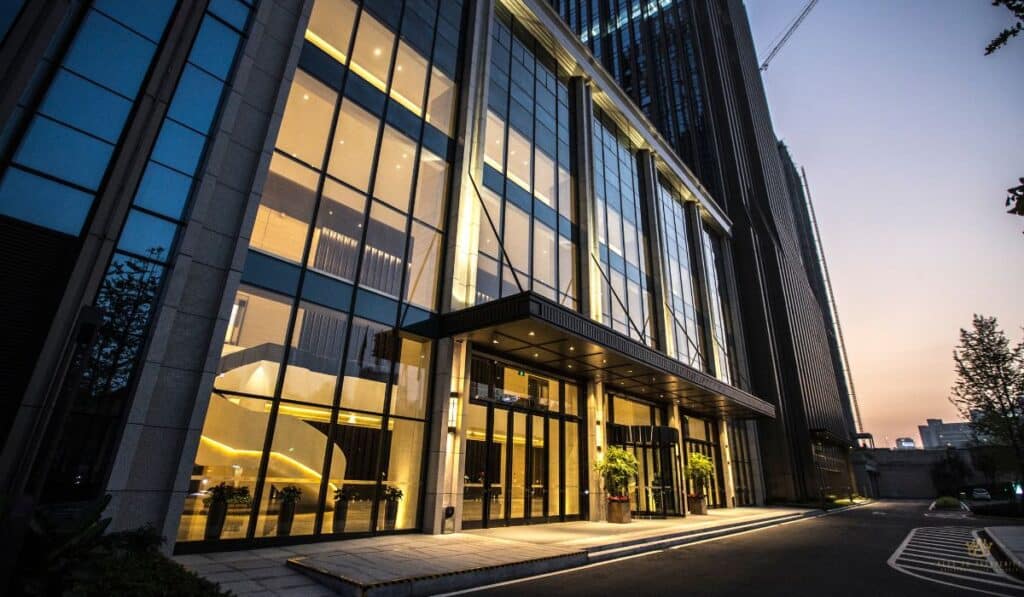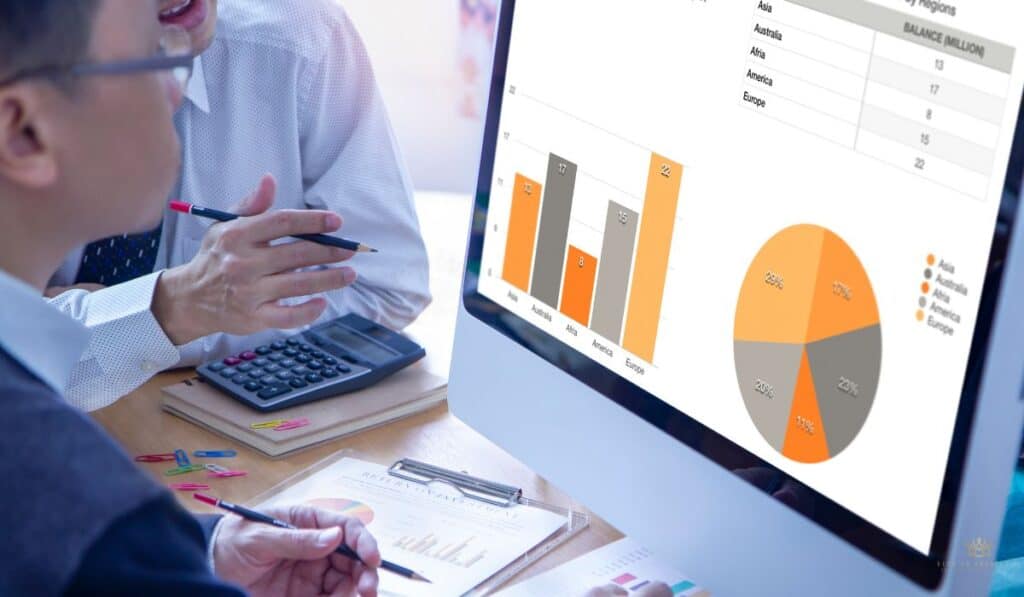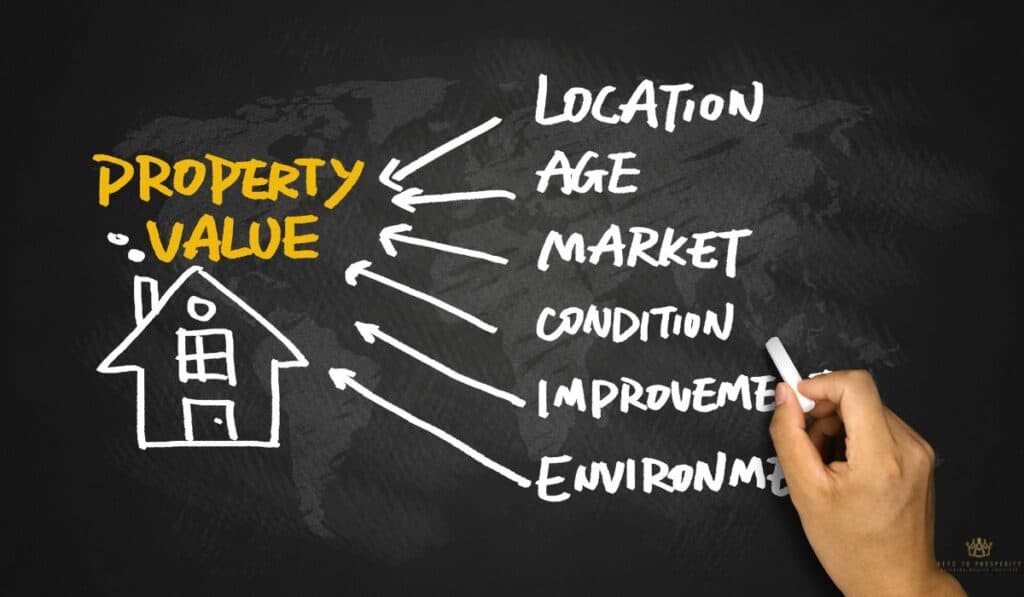
Commercial real estate is booming, and so is the need to understand commercial property underwriting.
In fact, the U.S. commercial property insurance market brought in roughly $254.9 billion in 2022, and experts expect it to climb to $724 billion by 2032, which is a massive jump driven by an 11.3% annual growth rate.
One thing is clear: securing real estate loans starts with knowing how underwriters assess risk and crunch numbers. Making smart commercial real estate investment decisions depends on understanding how they determine a property’s value.
This guide breaks down the underwriting process, from evaluating a property’s net operating income to understanding the debt service coverage ratio and loan to value ratio.
We’ll show how property appraisal, market conditions, and a borrower’s credit history play into loan approval.
The goal is to equip industry pros, like lenders, investors, and analysts, with the tools to approach real estate transactions confidently and work smarter with commercial real estate underwriter teams.
Understanding risk adjusted returns in commercial real estate is crucial for making informed investment choices, as we discussed in our previous article.
Once you grasp how to analyze a commercial property, the next step is diving into underwriting to evaluate financial stability and potential returns.
For our next article, we’ll explore commercial sales comparison evaluation, a key method for assessing a property’s market value based on similar sales.
Let’s get started!
Short Summary
- Commercial property underwriting evaluates risk and financial stability before approving a loan or investment in commercial real estate.
- Key factors include net operating income, cash flow, debt service coverage ratio, loan to value ratio, and property appraisal.
- Borrower’s creditworthiness is assessed through credit history, financial statements, and profit-generating ability.
- Risk assessment considers property condition, market trends, potential disasters, and interest rate impact.
- Strong underwriting protects lenders and investors while ensuring long-term property value.
Understanding Commercial Property Underwriting Process

If you know how commercial property underwriting works, then you have a leg up. Knowing or not knowing how it works can make or break a deal. Real estate transactions can fall apart simply because a borrower didn’t grasp the basics. Let’s break it down.
What Is Underwriting And Why It Matters In The Financial World
Underwriting is the process real estate underwriters use to assess risk before approving real estate loans. In commercial real estate, this means evaluating a property’s value, income potential, and the borrower’s ability to repay.
Strong underwriting doesn’t just help lenders. It safeguards investors and keeps the entire commercial real estate investment landscape stable.
However, underwriting is just one piece of the puzzle. For more insights on navigating commercial real estate transactions with confidence, visit our homepage and explore expert resources tailored for investors, lenders, and industry professionals
Key Components Of The Underwriting Process
Every underwriter focuses on a few core elements. We always start by analyzing the property’s net operating income to gauge cash flow. Then, we check the debt service coverage ratio, which is the measure of whether a property’s income can cover its debt payments.
We also assess the loan to value ratio, comparing the loan amount to the property’s appraised worth. These figures guide loan approval and influence loan terms.
Role Of A Commercial Real Estate Underwriter
We like to think of the commercial real estate underwriter as the deal’s gatekeeper. Their job is to scrutinize every initial loan application, reviewing the property appraisal, running a market analysis, and verifying borrower’s creditworthiness.
If something looks off, they’ll flag it, like when an appraisal on an existing building came in low, and we had to renegotiate the deal to protect both parties.
How Underwriting Prevents Financial Losses
Underwriting shields both lenders and investors from bad deals. We’ve seen cases where skipping proper risk assessment led to huge losses, like buying a commercial property with hidden structural issues. A solid property inspection and financial review can prevent that.
Impact Of Market Conditions On Decisions
Local market conditions can shift quickly. We’ve had deals stall because market trends showed rising interest rates or vacancies. So, what should you do to prevent this? Stay updated! Market conditions let underwriters adjust valuations and make informed decisions.
It helps us all avoid overpaying for properties.
Key Factors In Commercial Real Estate Underwriting Analysis
Commercial real estate underwriting requires balancing numbers, market insights, and practical experience. While not all of us can be batting a thousand percent in real estate transactions, we can certainly try.
In this case, we can improve our chances of getting the best deals by paying attention to several key factors.
Rushing through these can lead to poor investments, or worse, loan approval delays.
1. Assessing Property’s Net Operating Income And Cash Flow
A property’s success often boils down to its property’s net operating income (NOI). We calculate NOI by subtracting operating expenses like utilities and maintenance from property’s income.
- High NOI means stable cash flow.
- Low NOI raises red flags for mortgage lenders and investors.
- Steady cash flow often leads to better loan terms.
Tip: Always request detailed rent rolls and expense reports upfront.
2. Evaluating The Debt Service Coverage Ratio
This metric is non-negotiable for real estate underwriters. The debt service coverage ratio (DSCR) measures if a commercial property generates enough cash to cover its debt payments.
- A DSCR over 1.25 usually signals lower risk.
- Anything below 1 raises concerns for loan approval.
From our experience, properties with strong DSCRs tend to secure financing faster.
3. Analyzing Loan to Value Ratio And Cap Rate
Lenders rarely overlook the loan to value ratio (LTV). It compares the loan amount to the property’s value, helping gauge risk.
- Lower LTV often means lower risk for both lenders.
- Higher LTV can signal overleveraging, making financial stability a concern.
- We also factor in cap rate (short for capitalization rate). It’s the rate of return based on the property’s value and NOI.
Tip: We’ve seen similar properties in the same block with vastly different cap rates—so always dig into the details.
4. Importance Of Property Appraisal And Market Value

A reliable property appraisal determines market value. You an avoid inflated valuations by working with trusted insurance brokers and appraisers.
- Accurate appraisal prevents loan application setbacks.
- Overvaluation can stall closings or lead to loan to value issues.
5. Reviewing Operating Expenses And Property Taxes
Expenses can sneak up on you. We’ve had deals where unexpected property taxes threw off NOI calculations.
- Analyze past tax records.
- Review repair and maintenance costs.
- Include tenant improvements in expense estimates.
6. Watching For Tenant Improvements And Lease Expirations
Future income depends on stable tenants. We always ask:
When do the leases expire?
Are tenants pushing for major tenant improvements?
What’s the renewal probability?
Ignoring this can result in sudden vacancies and financial losses.
7. Comparing Similar Properties In The Area
Finally, we study similar properties nearby. This helps verify market value and ensures the property’s appraised value aligns with local market conditions.
Tip: Walk the neighborhood. Talk to other property owners. It’s saved us from bad investments more than once.
Evaluating Borrower’s Creditworthiness And Financial Stability
Lenders don’t just look at the property. They scrutinize the borrower’s creditworthiness just as carefully. A strong financial stability goes a long way for having creditworthiness.
No matter how promising an investment seems, if a borrower’s financials don’t check out, securing a commercial real estate loan becomes an uphill battle.
1. Reviewing Credit History And Credit Report
A borrower’s credit history tells a story. It shows how debts were handled in the past and how reliable the borrower is when it comes to making payments.
- A credit report highlights past loans, defaults, and payment patterns.
- Late payments or high debt utilization can raise red flags for commercial lenders.
- A strong history of responsible borrowing signals lower risk.
Tip: We always recommend reviewing your credit report early in the process. Correcting errors before applying for a commercial mortgage can improve approval chances.
2. Analyzing Financial Statements And Employment History
Lenders don’t just look at credit scores. They also dig into financial statements and, for individuals, employment history. These documents provide insight into cash reserves, income stability, and overall financial management.
- Business owners must provide profit and loss statements, balance sheets, and tax returns.
- Steady employment history reassures lenders of consistent income.
- Gaps in income or fluctuating financial statements can trigger additional scrutiny.
3. Assessing the Borrower’s Ability To Generate Profit
Profitabilty is what matters for businesses and real estate investors. Lenders want to see proof that a borrower has the financial capacity to generate enough income to repay the loan amount.
- Strong cash flow statements increase confidence.
- A history of growing annual revenue makes a borrower more attractive.
- Weak profit margins may result in higher interest rates or loan denial.
4. Importance of Financial History In Loan Approval
Lenders, however, evaluate more than just current finances. A long track record of responsible financial management plays a huge role in determining loan approval.
- Consistent revenue growth builds credibility.
- Past bankruptcies or defaults may require extra documentation or higher down payments.
- A borrower’s financial history often determines loan terms and interest rates.
5. Evaluating Total Loan Amount vs. Borrower’s Resources
Still, good credit and strong financials isn’t enough for lenders. They’ll compare the total loan amount against available resources. Borrowers need enough liquidity to cover unexpected costs, vacancies, or economic downturns. Minimizing risks as much as possible, that’s SOP.
- Having substantial cash reserves reassures lenders.
- Low debt-to-income ratios improve borrowing capacity.
- Overleveraging can lead to loan rejection or stricter terms.
Thorough preparation makes all the difference. Borrowers who understand their creditworthiness and present well-documented financial stability have a much smoother path to securing financing.
Risk Assessment And Property Analysis In Commercial Real Estate

Risk assessment is one part of commercial property analysis that we never rush. Paranoia? Not really. More like making sure a property will hold its value and keep generating income down the line.
Nothing wrong with a little extra caution early on, right?
1. Property Inspection And Condition Evaluation
No one wants to discover foundation issues after closing a deal. That’s why a thorough property inspection is non-negotiable.
- Structural integrity, HVAC systems, roofing, and plumbing all need a professional look.
- Deferred maintenance can quickly turn into costly repairs.
- A clean bill of health boosts confidence in a property’s future performance.
2. Analysis of Local Market Conditions And Market Trends
A property’s success isn’t just about its four walls. The neighborhood and market can make or break long-term profitability.
- We review local market conditions to spot rental demand and vacancy rates.
- Staying ahead of market trends helps predict future property value shifts.
- Areas with growing populations and businesses often signal lower risk.
3. Use of Automated Valuation Models (AVMs)
We lean on automated valuation models when we need quick property value estimates.
- AVMs pull data from comparable sales and market performance.
- They help cross-check appraisals and support faster decision-making.
- While helpful, we never rely solely on AVMs—they’re a tool, not the final word.
4. Assessment Of Potential Risks Including Natural Disasters
We’ve seen properties that looked perfect on paper but sat in flood zones. Understanding potential risks like hurricanes, earthquakes, or wildfires is crucial.
- Reviewing FEMA maps and insurance requirements is part of our standard process.
- High-risk areas often mean increased premiums and repair costs.
- Factoring in these risks early avoids surprise expenses later.
5. Evaluation Of Renewal Probability And Future Income Potential
Stable tenants today don’t guarantee stability tomorrow. We always ask, “How likely are they to stay?”
- Renewal probability depends on lease terms and tenant satisfaction.
- Properties near amenities or business hubs tend to retain tenants better.
- Reliable income streams make financing easier and reduce investment uncertainty.
6. Impact of Interest Rate On Risk Involved
We’ve all felt the sting of rising interest rates. They can inflate borrowing costs and shrink returns.
- Fixed-rate loans offer stability, while variable rates can spike payments.
- We always calculate different rate scenarios to avoid nasty surprises.
- Understanding rate trends helps in choosing the right financing option.
7. Property’s Ability To Maintain Value
A good property today should still be a good property a decade later. That’s our goal.
- Locations with strong economic growth often maintain or increase value.
- Properties needing frequent updates can drain profits.
- Solid construction and desirable locations tend to weather market shifts better.
Balancing optimism with careful risk assessment has saved us more times than we can count. Commercial property analysis may seem like just risk-avoidance. It’s more than that. t’s more about knowing them and preparing accordingly.
Final Thoughts

Commercial property underwriting comes down to knowing the numbers, evaluating risks, and making sure both the property and the borrower can hold up financially.
From our experience, the best deals happen when we stay informed and ask the right questions before signing anything. Strong underwriting keeps lenders, investors, and property owners on solid ground.
Want to sharpen your skills or need help navigating your next deal? Keep learning, stay curious, and reach out if you need support. We’re here to help.
Frequently Asked Questions
What Is Commercial Property Underwriting?
Commercial property underwriting is the evaluation process used by lenders and investors to assess the risks and financial viability of a commercial real estate property before approving a loan. It involves reviewing property performance, market conditions, and borrower stability.
Why Is Net Operating Income (NOI) Important In Underwriting?
NOI measures a property’s profitability after operating expenses but before debt payments. It helps underwriters determine cash flow strength and whether the property can cover its debt obligations.
How Do Underwriters Evaluate A Borrower’s Creditworthiness?
They review credit history, financial statements, income sources, and employment stability. Lenders want to confirm the borrower can handle debt and maintain the property.
How Do Market Conditions Affect Underwriting?
Changing interest rates, local competition, or economic downturns can reduce property value or rental income. Underwriters factor these shifts into their risk analysis to protect against potential losses.






